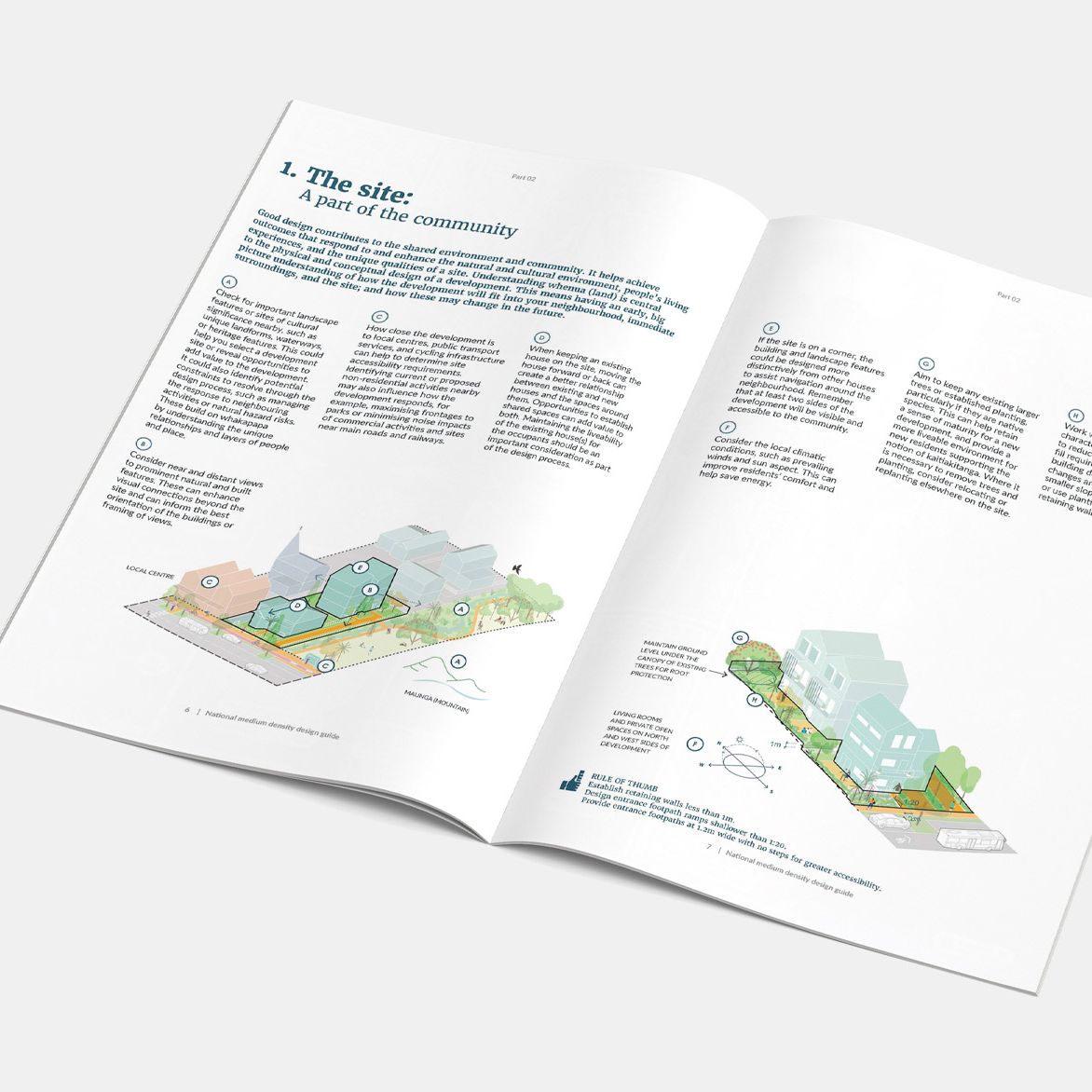Development of a national guide to encourage well-functioning and high-quality housing.
Medium-density design guidance is variable throughout many urban areas of Aotearoa New Zealand. Following the Government’s passing of the Resource Management (Enabling Housing Supply and Other Matters) Amendment Act, this national guidance was a unique opportunity to encourage well-functioning and high-quality design, to achieve positive outcomes for New Zealand housing.
The Ministry for the Environment (MfE) was seeking the delivery of a national medium-density design guide that incorporates te ao Māori perspectives relevant to medium-density housing. The focus of the guide is on three-unit developments up to three storeys in height that are permitted under the Medium Density Residential Standards (MDRS). The guide also draws on kaupapa Māori design, understanding specific knowledge, considerations, and protocols associated to kāinga.
As the main target for the guide are property owners and small-scale developer the text and graphics of the guide needed to be clear and easy to understand. As the guide would not hold a statutory status, the objective was to create a guide that was easy and attractive to read which was done by including clear and colourful graphics and by focusing on the benefits of incorporating the guidance into the developments.


